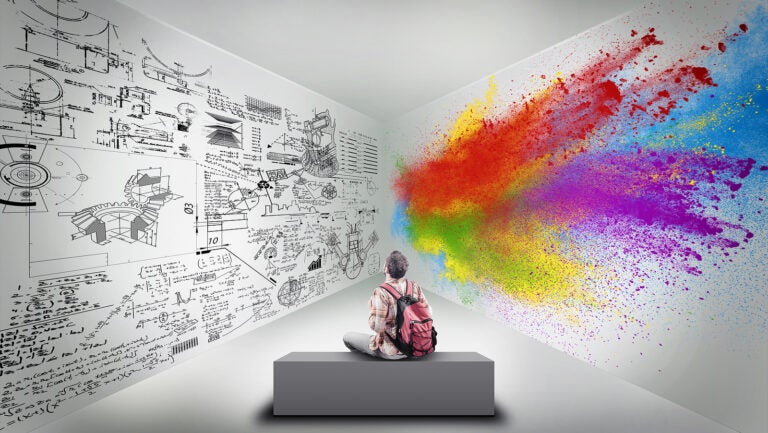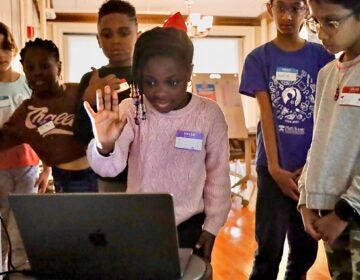How Art and Science Intersect
We explore the hidden architecture of science that often underlies music, literature, and more.
Listen 49:19
Young man sitting in a room divided by brain hemispheres.Creative half and logical half.
We often think of art and science as existing in different — even opposite — spheres. One revolves around creativity and imagination; the other around observable facts and data — and never the twain shall meet.
But really, art and science aren’t as far apart as we might think. For centuries, artists have drawn on the natural sciences, and the wonders of the natural world, as inspiration for some of our most celebrated works.
On this episode, we explore the hidden architecture of science that often underlies music, literature, and more. We talk with a mathematician who makes the case that math is key to appreciating literature on a whole new level; a pianist who reveals how the natural world inspired some of classical music’s most iconic composers; and an artist whose work on water blurs the lines between art, ecology, and activism.
Also heard on this week’s episode:
- We talk with mathematician Sarah Hart about some of the unexpected ways that numbers and math enhance great literary works, ranging from Moby Dick to Shakespeare. Her book is “Once Upon a Prime: The Wondrous Connections Between Mathematics and Literature.”
- Pianist and musical scholar Rachel Franklin explains how songbirds and the natural world inspired some of our most celebrated composers.
- Producer Nichole Currie talks with eco-artist Betsy Damon about why she decided to dedicate herself to water issues, and how her innovative installations have jumpstarted conversations about environmental threats and solutions.
WHYY is your source for fact-based, in-depth journalism and information. As a nonprofit organization, we rely on financial support from readers like you. Please give today.






